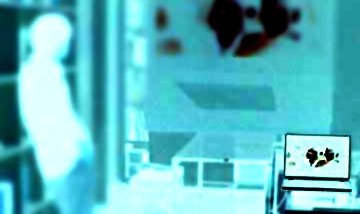Nov , 2003
設計師被簡報科技給設計了

撰文/ 黃懷德
當場上起了設計課及現代建築史,造成簡報時間的冗長沉悶,往往使簡報的流暢度顯的斷斷續續,設計主軸成了其中的插曲。
運用科技產品及軟體進行簡報,應該是很普遍的簡報方式了吧。包括我們的專業在內,時常都有簡報提案的需要,對設備的要求總是下足本錢,並且定時的汰換,只要其運用的心態正確,這也算是投資的一種。
時有同其他設計單位同場簡報的機會,我們一直覺的怪異的是,常出現一樣的畫面及內容,往往可以有不同的解釋及冠以不同的設計主題,也因為畫面實在豐富動人,而顯的有些流於表面。進入高科技簡報提案的時代,藉著高科技產品精密的運算及包裝,確實有直接加分的實際效益,能夠提供更為清楚的訊息,及營造動人的畫面情境,供業主作為決策的參考依據,如何有效的運用,便成為一個值得深究的課題,因為工具畢竟只是工具,而非整體的主軸。
其中個人覺得較值得檢討的部分,分別是:
透過文字及圖像的編排,豐富的畫面掩飾簡報內容的空洞及不足。
簡報軟體的呈現重要性超越了簡報內容,簡報者及其陳述內容才是主軸,簡報的圖像畫面只是輔助性質,而非簡報主軸。
投影片以量取勝的心態,硬是把簡報圖像浮增,造成每一個畫面真正能陳述的內容顯的空洞,成為只是一場視覺元素的表演秀。
陪襯的圖文造成模糊焦點的效果。
單一畫面充斥過多的訊息,干擾或誤導業主,讓主要的設計概念模糊。
當場上起了設計課及現代建築史,造成簡報時間的冗長沉悶,往往使簡報的流暢度顯的斷斷續續,設計主軸成了其中的插曲。
其實,設計前期的提案簡報,本就無法像其他業種可以針對單一事件陳述,一般來說,設計提案的用意在於一個設計主軸的傳達說明,透過設計畫面的構築及呈現,讓業主能清楚的了解設計主軸,其他較相關實際機能的部份,還是必須留待真正進入設計流程後,才能實際的去檢討各種執行上及整合上的問題,只是,對於簡報提案的心態及科技產品的依賴,還是有其再檢討的必要性,而不是一種表現eloquence的過程,或是簡報目的的扭曲及假象。
設計師被簡報科技給設計了

撰文/ 黃懷德
當場上起了設計課及現代建築史,造成簡報時間的冗長沉悶,往往使簡報的流暢度顯的斷斷續續,設計主軸成了其中的插曲。
運用科技產品及軟體進行簡報,應該是很普遍的簡報方式了吧。包括我們的專業在內,時常都有簡報提案的需要,對設備的要求總是下足本錢,並且定時的汰換,只要其運用的心態正確,這也算是投資的一種。
時有同其他設計單位同場簡報的機會,我們一直覺的怪異的是,常出現一樣的畫面及內容,往往可以有不同的解釋及冠以不同的設計主題,也因為畫面實在豐富動人,而顯的有些流於表面。進入高科技簡報提案的時代,藉著高科技產品精密的運算及包裝,確實有直接加分的實際效益,能夠提供更為清楚的訊息,及營造動人的畫面情境,供業主作為決策的參考依據,如何有效的運用,便成為一個值得深究的課題,因為工具畢竟只是工具,而非整體的主軸。
其中個人覺得較值得檢討的部分,分別是:
透過文字及圖像的編排,豐富的畫面掩飾簡報內容的空洞及不足。
簡報軟體的呈現重要性超越了簡報內容,簡報者及其陳述內容才是主軸,簡報的圖像畫面只是輔助性質,而非簡報主軸。
投影片以量取勝的心態,硬是把簡報圖像浮增,造成每一個畫面真正能陳述的內容顯的空洞,成為只是一場視覺元素的表演秀。
陪襯的圖文造成模糊焦點的效果。
單一畫面充斥過多的訊息,干擾或誤導業主,讓主要的設計概念模糊。
當場上起了設計課及現代建築史,造成簡報時間的冗長沉悶,往往使簡報的流暢度顯的斷斷續續,設計主軸成了其中的插曲。
其實,設計前期的提案簡報,本就無法像其他業種可以針對單一事件陳述,一般來說,設計提案的用意在於一個設計主軸的傳達說明,透過設計畫面的構築及呈現,讓業主能清楚的了解設計主軸,其他較相關實際機能的部份,還是必須留待真正進入設計流程後,才能實際的去檢討各種執行上及整合上的問題,只是,對於簡報提案的心態及科技產品的依賴,還是有其再檢討的必要性,而不是一種表現eloquence的過程,或是簡報目的的扭曲及假象。
Designer being tricked by brief technology
By Roy Huang
It is just like a design class or modern architecture history class, which makes the brief meeting copious and ruins the fluency of the brief; in the situation, the topic of designing becomes secondary.
Using technology and computer software in a brief meeting is very common nowadays. Most professionals including ours, need to have briefing and proposal meetings frequently, and we usually invest in a lot in the equipment and update it regularly. I think it is worth investing as long as using it with right attitude.
When we listen to briefs in the meeting, we find every team uses similar images and contents that could be explained in different topics of designing. Although those images are really attractive, they seem to be superficial to me. In high-technology era, people can receive the beneficial result by using sophisticated apparatus and software. They truly can provide explicit information and create attractive images, which could be the basis for proprietor’s final decision. However, how to effectively apply it becomes an issue -- apparatus is an assistant after all, not the priority.
Here are some problems I would like to point out:
Through the formation of words and images, the ample frame seems too much and covers up the insufficiency of the brief contents.
The presentation skill takes over the subject matter. From my point of view, the presenter and contents are the major matter, the images only subsidiary.
Too many projections or slide shows present nothing but empty contents. Those images can no longer present any solid idea but a visual performance.
The description and image seen as a foil blur the focal point of the brief.
Too much information described within a single frame will confuse or even mislead the proprietor, and blur the main idea of the design.
Sometimes the brief meeting becomes a design class or modern architecture history class, which makes the brief meeting copious and ruins the fluency of the brief; in the situation, the topic of designing becomes secondary.
In fact, the brief and proposal meeting in earlier stage of design, which is totally different from other businesses, cannot only clearly describe a single event. Generally, the meaning of proposal is to express the main idea of designing. Through the designing image and construction, the proprietor can clearly understand the point. Then, other relative issues and functional designing will be discussed, organized, and executed after entering technological processes. Therefore, I think we should reconsider our attitude towards briefing and our dependence on technology. We should not rely on modern technology as “eloquence;” otherwise, the meaning of brief meeting will be easily distorted.


